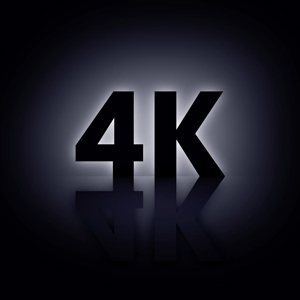VP9 codec from Google to allow streaming 4K videos on YouTube
4K streaming on YouTube, without causing ISP bills to break your bank account, will soon be possible - thanks to the VP9 codec developed by Google. YouTube will demonstrate how 4K stream works at the Consumer Electronics Show (CES) in Las Vegas next week. VP9 will aim at replacing the H.265 video codec which continues to be at the heart of most of the 4K videos. For the codec to be successful and popular, it's very important that Google signs up as many hardware makers as possible. It looks like Google's already got interest from some of the biggest consumer electronics makers including Toshiba, Samsung and Sharp.

The VP9 isn't the first ever video codec from Google to be released based on the new BSD license. VP8, the earlier version of video compression format which was developed by Google & On2 Technologies was made available under the same license. VP9 changes the game by cutting down on the bit rate by about 50% as compared to VP8; with no compromise on the quality of the video. VP9 also ensures better compression efficiency than the High Efficiency Video Coding.
If you are visiting the CES 2014; you may check the demonstration from YouTube at the booths of LG, Panasonic and Sony. Google's already partnered with chipset makers who've confirmed support to VP9 - and the list includes Intel, ARM, Broadcom and Marvell. Francisco Varela, who heads global platform partnerships at YouTube said that they'll look at supporting both VP9 and H.265 video codecs.
It's expected that the VP9 codec will first be supported by PCs and Mobile Devices first followed by Television Sets. If things go as planned, you should see TV sets with VP9 support shipping in 2015.

The VP9 isn't the first ever video codec from Google to be released based on the new BSD license. VP8, the earlier version of video compression format which was developed by Google & On2 Technologies was made available under the same license. VP9 changes the game by cutting down on the bit rate by about 50% as compared to VP8; with no compromise on the quality of the video. VP9 also ensures better compression efficiency than the High Efficiency Video Coding.
If you are visiting the CES 2014; you may check the demonstration from YouTube at the booths of LG, Panasonic and Sony. Google's already partnered with chipset makers who've confirmed support to VP9 - and the list includes Intel, ARM, Broadcom and Marvell. Francisco Varela, who heads global platform partnerships at YouTube said that they'll look at supporting both VP9 and H.265 video codecs.
It's expected that the VP9 codec will first be supported by PCs and Mobile Devices first followed by Television Sets. If things go as planned, you should see TV sets with VP9 support shipping in 2015.
0
